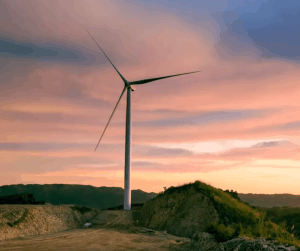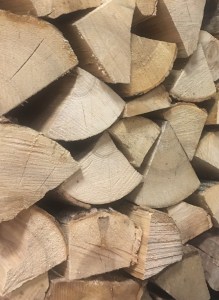 The Government in Scotland have set ambitious levels to reduce greenhouse gases over the next 15 years. Scotland has already exceeded it’s 2020 climate change target by achieving an impressive 42% reduction in emissions six years early. By 2032 Scotland aims to be able to produce 80% of domestic heat by low-carbon heat technologies.
The Government in Scotland have set ambitious levels to reduce greenhouse gases over the next 15 years. Scotland has already exceeded it’s 2020 climate change target by achieving an impressive 42% reduction in emissions six years early. By 2032 Scotland aims to be able to produce 80% of domestic heat by low-carbon heat technologies.
It also aims to have a fully decarbonised electricity sector by that time too. By 2050 Scotland aims to be “near carbon neutral”.
Renewable Energy in Scotland:
Scotland is full of abundant resources, which is great for renewable energy. In 2012, over 40% of Scotland’s electricity came from renewable energy, and Scotland contributed almost 40% of the UK’s renewables output. Other notable renewable energies in Scotland:
1. Scotland has 86% of the UK’s hydro-electric resource
2. Wind power in Scotland is the country’s fastest growing renewable energy, with 5587 MW of installed capacity as of 2015
3. There is huge potential for wave power utilising the sea off the Scottish coasts
4. Geothermal energy is obtained by tapping the heat of the earth itself. Most systems in Scotland provide heating through a ground source heat pump which brings energy to the surface via shallow pipe works.
The Role of Burning Wood:
Burning wood in a high efficiency stove will provide a valuable contribution to help Scotland to reach it’s ambitious targets, especially it’s quoted 80% of domestic heating from low-carbon heat technologies. Burning wood on a high efficiency stove, like those found in the Charlton & Jenrick range can produce less CO2 than wood, left to rot on the floor of a forrest. This fact alone is a huge reason why people should pay attention to the significant benefits that can be derived by burning wood.
The Best Wood To Burn:
To ensure maximum environmental benefit when burning wood, it is best to only use correctly seasoned wood. Selecting the best type of wood is also essential. Below is a list of wood from the best to the worst in terms of heat and overall efficiency.
 The Best Wood:
The Best Wood:
Ash – (Scientific Name – Fraxinus) Ash is thought to be one of the very best woods for burning. Ash creates a steady flame and a good heat output. Unlike other wood, ash can be burnt when green, but like with most wood burns at it’s very best when it is dry.
Beech – (Scientific Name – Fagus) Like ash, beech burns very well. However, it does not burn well when green due to it’s much higher moisture content when live. Beech can be identified by it’s pale cream colour with a pink or brown hue.
Hawthorn – (Scientific Name – Crataegus) This type of wood has a slow burn rate, and a good heat output.
Rowan – (Scientific Name – Sorbus) Similar to hawthorn, rowan has a very good heat output that burns slowly. Rowan is also know as Mountain Ash.
Thorn – (Scientific Name – Acacia Nilotica) Thorn produces very little smoke, which makes it an ideal wood where excessive smoke could be an issue. It also is considered a very good wood as it has a slow burn and produces a good level of heat.
Good Wood:
Apple – (Scientific Name – Malus Domestica) Apple has a small flame and tends to not produce sparking or spitting. The flame burns slowly and produces a good level of heat output along with a nice scent too.
Birch – (Scientific Name – Betula) Birch is similar to ash in that it can be burnt when green. It does produce a good heat output and a strong flame. Yellow Birch and Black Birch (also know as Mountain Mahogany, Sweet Birch and Cherry Birch) produces the best firewood.
Cedar – (Scientific Name – Cedrus) Cedar fire wood is quite distinctive as it can spit and crackle when burning. Although the flame from cedar is small, it does tend to last a long while and has a strong heat output. Cedar is a very popular wood for kindling. It is porous and contains natural oils, which is the reason why it can crackle and spit when burning.
Cherry – (Scientific Name – Prunus Avium) Cherry needs to be well seasoned but does burn well and produces a good heat. It is easy to split too, which is ideal if you are having to cut your own firewood. Cherry can spark a little more than most other firewoods, which may cause issues when using on an open fire.
Hornbeam – (Scientific Name – Carpinus Betulus) This burns in a similar way to beech, which is similar to ash – both are excellent firewoods.
Horse Chestnut – (Scientific Name – Aesculus Hippocastanum) This wood is ideal for burning in wood stoves but not open fires as it does spit a great deal.
Lilac – (Scientific Name – Syringa) This is ideal for kindling as it has smaller branches and burns really well. It is a hollow wood and is also often used on BBQs. Produces a clear flame and nice smell.
Maple – (Scientific Name – Acer) Produces a good flame and heat output. There are many versions of maple wood available, although most know sugar or hard maple. There are other forms of maple including Red Maple, Bigleaf Maple and Black Maple.
Oak – (Scientific Name – Quercus) Probably the best know wood in the UK for a range of reasons. It is a popular wood for furniture but also it makes great firewood. It burns very slowly and makes a small flame. It burns best when seasoned for a very long time (usually 2yrs+).
Pine – (Scientific Name – Pinus) The resin sap can cause deposits to form in the flue in a chimney, which can increase the risk of a chimney fire, so use with caution. It does however produce a good flame.
Adequate Wood:
Elm – (Scientific Name – Ulmus) Elm has a high moisture content and so should be dried for around 2 years – similar to oak in this respect, although nowhere near as good as oak as firewood. Elm can be slow to get going but can provide a decent flame.
Larch – (Scientific Name – Larix) Similar to Elm, it needs to be well seasoned. Beware of sap with Larch as this can form in the flue of a chimney and increase the risk of a chimney fire.
Laurel – (Scientific Name – Laurus Nobilis) This needs to be well seasoned and produces a good flame. However, it only has a reasonable heat output, making it not ideal for all types of fires.
Sycamore – (Scientific Name – Platanus Occidentalis) Sycamore is a decent firewood, and produces a good flame, but it does only have a moderate heat output and does need to be well seasoned as it does have a very high moisture content when live.
Poor Wood:
These are a list of woods, which generally don’t burn well, and or produce a poor flame output. Unless absolutely essential you should avoid trying to burn these types of wood.
Alder – Chestnut – Firs – Eucalyptus – Holly – Laburnum – Spruce.








